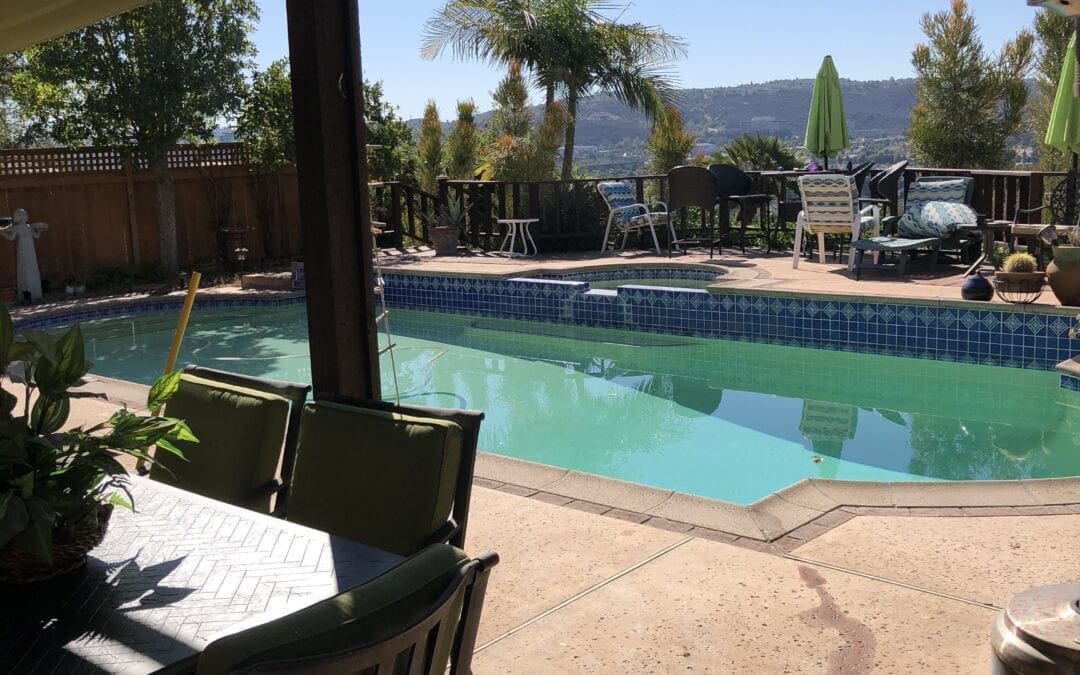Removing Algae From The Swimming Pool
With the temperatures warming up, green pools become more and more common every day. You can find them in vacant homes, residential swimming pools or in any pool that isn’t properly maintained with balanced water chemistry or proper filtration run times. We think it is extremely important to tackle this issue in a variety of different ways so we hope this blog post gives you a better understanding of why this happens and how you can troubleshoot the challenge and turn your pool blue again! Typically, you will see a direct correlation to green algae-filled pools with a lack of chlorine or poor filtration/circulation. Whenever you have warm water, algae loves to grow and if you don’t have the proper amount of chlorine in the water, algae will grow rapidly! The same goes for filtration if you’re not filtering your swimming pool long enough your chances for algae growth increase. In summary, algae will grow when your water chemistry isn’t balanced or when your filtration run times aren’t long enough. With that said, we also want to focus on a couple of other reasons why your swimming pool can be taken over by algae.
- High phosphates which are food for algae
- High Cyanuric Acid (CYA/stabilizer) levels or not enough of it.
Phosphates come from vegetation, soils, and fertilizers which is a food for algae. When phosphate levels increase in the swimming pool they must be removed because no matter how much chlorine you use, algae will grow. Typically, with high phosphates, you will need to purchase a phosphate remover if all your other chemistry levels are within normal ranges. Other factors could be high CYA levels. CYA helps reduce chlorine loss by protecting the free chlorine in the pool from the sun’s ultraviolet rays, reducing the amount of chlorine needed to maintain proper sanitizer levels. When these levels get too high, it lessens the effectiveness of chlorine to act as a disinfectant. Higher levels will bind with the chlorine, making it slower acting to kill bacteria and micro-organisms, and prevent algae from growing! This typically occurs because chlorine tabs have stabilizers in them. On the other hand, if you don’t have enough stabilizer chlorine will burn off quickly so make sure to check the levels because for most pools the typical levels needed are between 30 – 50 parts per million (ppm).
How To Treat Algae
When you’ve determined where the growth is coming from, Weber Pools recommends the following steps to help remove the algae:
- Identify the type of algae
- Check chlorine, pH and phosphate levels. Balance all of them and remove the phosphates
- Check all pool equipment for leaks
- Check filtration equipment for tears in the filter grids or old sand
- Check run times for your filter equipment. in the summertime, most pools will need a minimum of 8 hours each day.
If any of the above is the issue, the addition of more chlorine or increasing your filter run times should help. If you’re dealing with high CYA levels or calcium levels then a water change is necessary. Weber Pools has the ability to make your green pool blue quickly. We can help with all filter equipment repairs or pool maintenance. We can also help you with high calcium, TDS, and CYA levels too! We have a mobile filtration trailer that recycles swimming pool water instead of draining it. The Puripool Process uses Reverse Osmosis (RO) membranes to lower Calcium Hardness, Total Dissolved Solids, salts, phosphates, and CYA without draining the swimming pool.
Remember If you keep your pool in good shape, you will not only avoid the hassle of having to use various additional chemicals in the swimming pool but also dealing with the unnecessary algae bloom in your swimming pool! To learn more about weekly pool service in Dallas and how Weber Pools can help, please contact us today.

